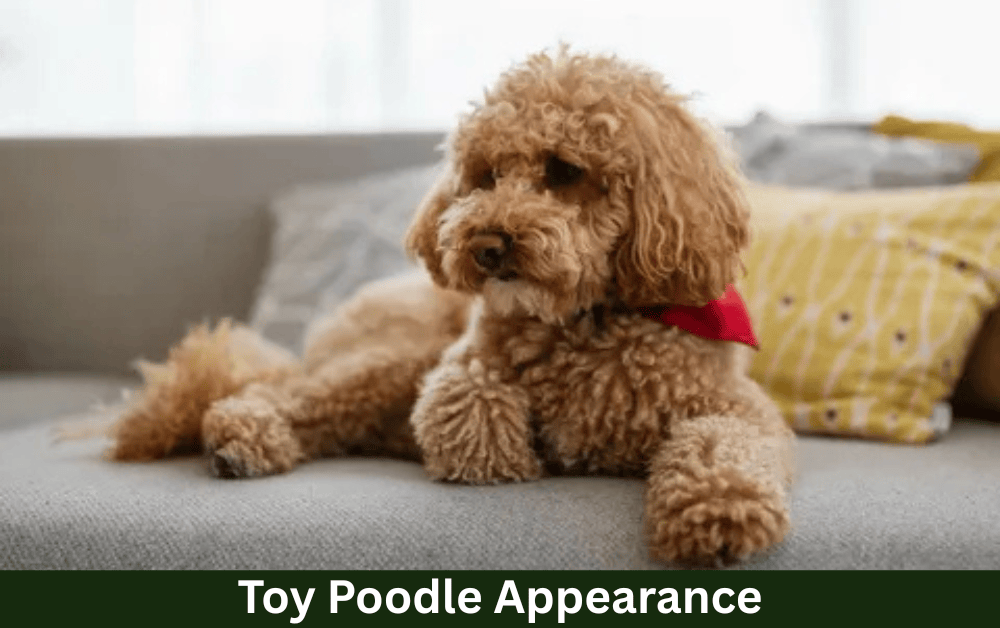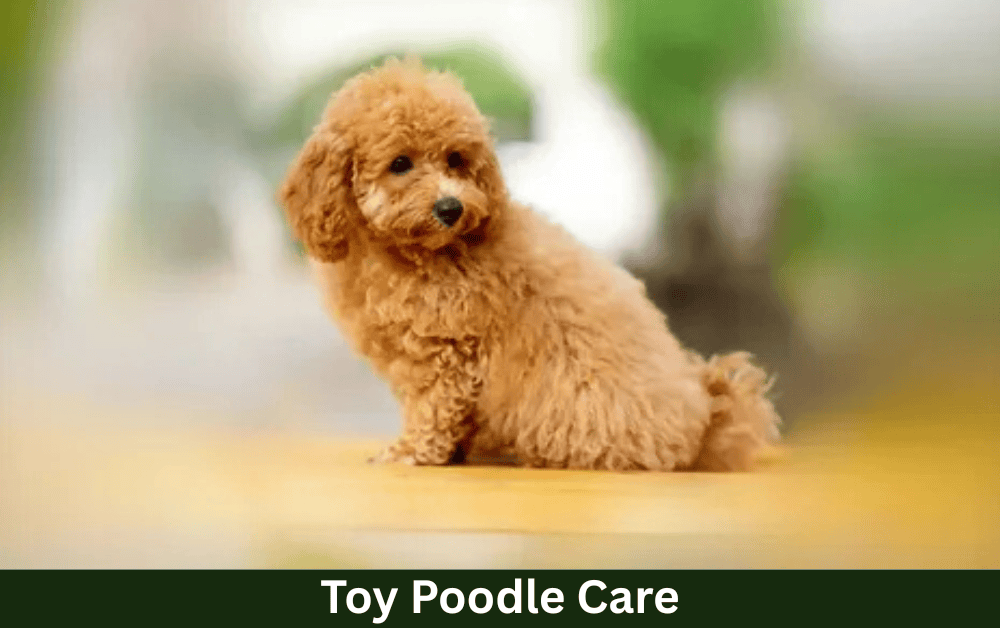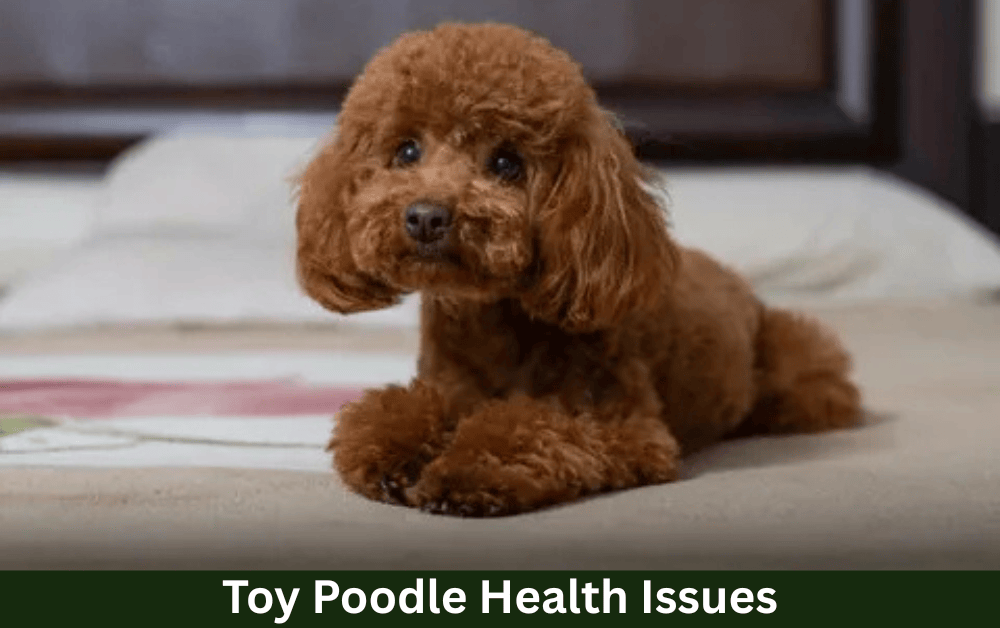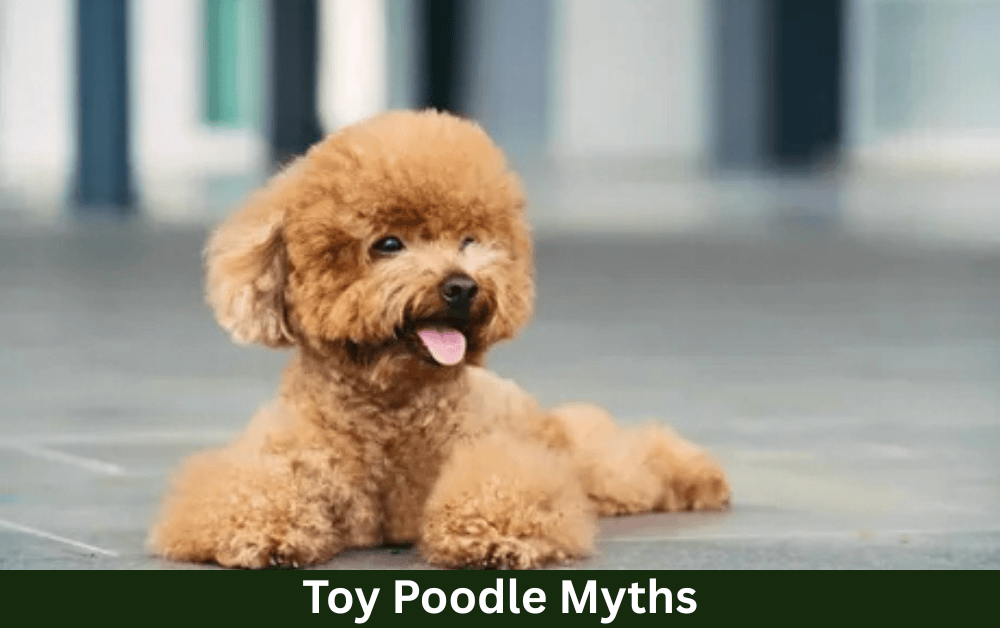Introduction
Toy Poodles represent one of the most intelligent and adaptable small dog breeds, combining elegance, trainability, and companionship in a compact 4-6 pound package. These hypoallergenic dogs boast curly coats that come in a rainbow of colors from classic black and white to rare phantom and merle patterns. While their delicate appearance might suggest fragility, properly bred Toy Poodles are surprisingly sturdy, and capable of participating in agility sports while also being perfect lap warmers. Their average lifespan of 12-15 years makes them long-term companions, though their care requires dedication to grooming, training, and health maintenance.
History and Origin of Toy Poodles
The Toy Poodle’s history begins with its larger ancestors, the Standard Poodles who worked as skilled water retrievers in Germany. By the 18th century, European aristocracy demanded smaller versions, leading breeders to carefully downsize the Poodle while maintaining its intelligence and elegant proportions. The Toy poodle variety became particularly popular among French nobility, with historical records showing Marie Antoinette’s fondness for these petite companions. Their small size and trainability later made them stars of traveling circuses, where they performed complex tricks to amazed audiences.
Key historical developments:
- Originated from German water retrieval dogs called “Pudels”.
- Systematically bred down from Standard to Miniature to Toy sizes.
- Became status symbols among European royalty in the 1700s.
- Performed in Victorian-era circuses due to high intelligence.
- Served as comfort dogs during World War II.
One breeder notes, “The transition from working dogs to companions took centuries, but the Toy Poodle’s versatility remains unchanged.”
Toy Poodle Physical Characteristics

Toy Poodle dogs maintain the classic Poodle proportions in miniature poodles, standing under 10 inches tall at the shoulder with a square build (body length equal to height). Their most distinctive feature is the dense, curly coat that grows continuously and comes in three texture types: tight curls (most common), wavy, and the rare corded variety. The breed’s expressive dark eyes and long, flat ears framing the face create an alert, intelligent expression.
Detailed physical attributes:
- Size: Typically 4-6 pounds, never exceeding 10 inches in height
- Coat colors:
- Common: Black, white, cream, apricot
- Uncommon: Silver, blue, café au lait
- Rare: Phantom, parti-color, merle
- Eye colors: Dark brown (standard), amber (in red/apricot coats), blue (in merles)
- Special features: Webbed feet (from water-retrieving ancestry), high tail carriage
Toy Poodle Growth Chart
| Age | Weight (lbs) | Height (inches) | Growth Stage |
|---|---|---|---|
| 8 weeks | 1.5 – 2.5 | 4 – 5 | Puppy (Early Growth) |
| 3 months | 2 – 3.5 | 5 – 7 | Rapid Growth |
| 4 months | 3 – 5 | 6 – 8 | Steady Growth |
| 6 months | 4 – 6 | 7 – 9 | Slower Growth |
| 9 months | 5 – 7 | 9 – 10 | Near Adult Size |
| 12 months | 6 – 9 | 9 – 10 | Full Grown |
A show judge explains, “Proper Toy Poodles should never appear fragile—they’re small but substantial, with springy gait and proud bearing.”
Toy Poodle Lifespan
Toy Poodles typically live 12 to 15 years, with some reaching 16+ years with excellent care. Their longevity depends on genetics, diet, exercise, and preventative healthcare. Smaller “teacup poodle” varieties often have shorter lifespans due to health complications. Common age-related issues include dental disease, joint problems, and vision decline. Regular vet checkups, proper nutrition, and mental stimulation help maximize their lifespan. Many owners report their Toy Poodles remain playful and alert well into their senior years.
Toy Poodle Vs Miniature Poodle Size Comparison Table
| Feature | Toy Poodle | Miniature Poodle |
| Height | Under 10 inches | 10-15 inches |
| Weight | 4-6 lbs | 10-15 lbs |
| Origin | Bred as companions | Scaled-down Standards |
| Energy Level | Moderate | High |
| Best For | Apartment living | Active singles/seniors |
| AKC Recognition | Yes (Toy Group) | Yes (Non-Sporting) |
| FCI Recognition | Yes | Yes |
Toy Poodle Temperament And Personality
Behind their elegant exterior, Toy Poodle dogs possess lively, people-oriented personalities. Their exceptional intelligence (ranked second among all dog breeds) enables them to learn commands quickly but it also means they require constant mental stimulation to prevent boredom-related behaviors. These sensitive dogs form intense attachments to their families and often develop an intuitive understanding of household dynamics and routines.
Temperament characteristics:
- Intelligence: Capable of learning 100+ words and commands
- Social behavior:
- Thrives on human companionship
- Generally good with children (best with kids over 6 years)
- Gets along with other pets when properly introduced
- Energy level: Moderate—needs daily fun activities but adapts to owner’s lifestyle
- Common behaviors:
- “Velcro dog” tendency to follow owners everywhere
- Alert barking at strangers/doorbells
- Playful, clownish antics when comfortable
A therapy dog handler shares, “My Toy Poodle senses when nursing home residents need comfort before even I do—their emotional intelligence is remarkable.”
Toy Poodle Care and Grooming

Maintaining a Toy Poodle’s health and appearance requires systematic care. Their hypoallergenic coats don’t shed much but demand frequent brushing to prevent painful mats. Professional grooming every 4-6 weeks keeps their curls manageable while allowing inspection for skin issues. Beyond coat care, their small size makes dental health and joint support particularly important.
Essential poodle care routine:
- Daily:
- Brush coat with a slicker brush and metal comb
- Wipe face after meals (prevents tear stains)
- Provide fresh water in a clean bowl
- Weekly:
- Clean ears with a vet-approved solution
- Brush teeth 3-4 times
- Check and trim nails if needed
- Monthly:
- Professional grooming session
- Flea/tick prevention application
- Weight monitoring
A grooming professional advises, “Start handling paws and face early—puppies who learn grooming is positive grow into cooperative adults.”
Toy Poodle Health Issues and Prevention

Responsible ownership involves understanding Toy Poodle’s health vulnerabilities. While generally long-lived, their small size predisposes them to certain conditions that proactive care can mitigate. Regular vet checkups (twice yearly for seniors) help catch issues early.
Health considerations:
- Frequent conditions:
- Luxating patellas (slipping kneecaps)
- Dental crowding/decay
- Tracheal collapse
- Progressive retinal atrophy
- Preventative measures:
- Annual bloodwork after age 7
- Daily teeth brushing
- Joint supplements (glucosamine)
- Harness use instead of neck collars
- Warning signs:
- Reluctance to jump (joint pain)
- Excessive drinking (kidney issues)
- Coughing after excitement (trachea concern)
A veterinarian emphasizes, “Dental disease is the #1 preventable health issue—start brushing when they’re puppies.”
Toy Poodle Diet and Nutritional Needs
Toy Poodle puppies require carefully measured, nutrient-dense meals to maintain health without overeating. Their small jaws benefit from kibble designed for tiny breeds, while their tendency toward food allergies often necessitates limited-ingredient diets. Proper feeding prevents both obesity (a common issue) and hypoglycemia (dangerous for puppies).
Nutritional guidelines:
- Feeding amounts: 1/4 to 1/2 cup of high-quality dry food daily (divided into 2 meals)
- Best foods:
- Small-breed formulas with 25-30% protein
- Options for sensitive stomachs
- Dental health kibble shapes
- Foods to avoid:
- Chocolate, grapes, onions, xylitol
- Fatty table scraps
- Large kibble sizes
- Special considerations:
- Elevated bowls reduce neck strain
- Slow-feed dishes prevent gulping
- Scheduled treats (not free-fed)
One owner’s experience: “Switching to salmon-based food resolved my Toy Poodle’s itchy skin—it took three diet trials to find the right match.”
Toy Poodle Training Strategies
Toy Poodles’ intelligence makes them highly trainable but also sensitive to harsh methods. Positive reinforcement with treats/praise works best, keeping sessions short and fun. Early socialization prevents small-dog syndrome behaviors like excessive barking or nervousness.
Effective training approaches:
- Basic obedience:
- Teach sit/stay/come first
- Use high-value treats
- Practice in low-distraction areas initially
- Housebreaking:
- Take the puppy out hourly
- Use consistent potty phrases
- Reward immediately after elimination
- Behavioral issues:
- Redirect barking with a “quiet” command
- Prevent separation anxiety with gradual alone-time training
- Discourage jumping by ignoring until calm
Professional trainer tip: “If your Toy Poodle gets distracted, make exercises easier—set them up to succeed, then gradually increase difficulty.”
Toy Poodle Exercise Requirements
While Toy Poodle puppies adapt well to apartment living, they require daily physical and mental exercise to stay healthy and well-behaved. Their intelligence means simple walks won’t suffice—they thrive when given jobs like learning tricks or playing hide-and-seek with toys.
Recommended activities:
- Physical exercise:
- 20-30 minute walks twice daily
- Indoor fetch or flirt pole games
- Swimming (supervised, with life vest)
- Mental stimulation:
- Puzzle toys with treats
- Training sessions (5 minutes, 3x daily)
- Nose work/scent games
- Socialization:
- Visits to dog-friendly stores
- Playdates with calm dogs
- Exposure to various environments
An agility trainer notes, “Toy Poodles excel at obstacle courses—their athleticism surprises people who only see them as lap dogs.”
Choosing a Toy Poodle Puppy
Selecting a healthy, well-socialized puppy requires research. Reputable breeders health-test parents and raise puppies in home environments with early neurological stimulation. Pet stores and backyard breeders often produce dogs with health/behavior issues.
Puppy selection checklist:
- Breeder red flags:
- No health testing documentation
- Multiple litters are always available
- Refuses to show mother dog
- Healthy puppy signs:
- Clear eyes and clean ears
- No potbelly (a sign of worms)
- Willing to approach people
- Preparation needs:
- Puppy-proofed home
- Vet visit within 48 hours
- Quality small-breed food
A show breeder advises, “Meet both parents if possible—puppies often inherit their temperaments.”
How To Care For Senior Toy Poodle?
Around age 8-10, Toy Poodles enter their senior years needing adjusted care. While many remain active, their dietary needs, exercise tolerance, and health monitoring requirements change.
Senior care adjustments:
- Diet:
- Lower-calorie formula
- Added fiber for digestion
- Softened kibble if dental issues exist
- Comfort measures:
- Orthopedic dog beds
- Ramps for furniture access
- Non-slip floor surfaces
- Health monitoring:
- Biannual vet checkups
- Blood pressure checks
- Cognitive function observation
One owner shares, “My 14-year-old Toy Poodle thrives with short, frequent walks instead of long ones—we adjust while keeping her engaged.”
How Much Does Toy Poodle Cost?
The price of a Toy Poodle varies significantly based on source, quality, and location. Reputable breeders typically charge $1,500 to $3,000 for pet-quality puppies, while show-quality dogs can cost $3,000 to $5,000+. Adoption fees range from $200 to $800. Beyond the purchase price, first-year expenses (food, vet care, grooming) average $2,000 to $3,500, with annual costs of $1,200 to $2,000 thereafter.
Key cost factors:
✔ Breeder reputation (health testing adds $500 to $1,000)
✔ Color rarity (phantom/merle coats may cost 20-30% more)
✔ Geographic location (urban areas command higher prices)
✔ Training included (pre-trained puppies cost 25-50% extra)
Adopting a Toy Poodle
Adopting a Toy Poodle can be rewarding, but requires careful consideration. Many end up in rescues due to owners underestimating their grooming needs or high energy levels. Reputable adoption sources include breed-specific rescues, shelters, and retired show dogs. Always request medical records and temperament evaluations. Adoption fees (200−200−600) typically include vaccinations, spay/neuter, and microchipping. Be prepared for potential behavioral issues from previous neglect that may require patience and training.
Adoption essentials:
✔ Research breed characteristics thoroughly
✔ Ask about health history and any known issues
✔ Prepare for adjustment period (2-3 months)
✔ Budget for an immediate veterinary checkup
Common Myths About Toy Poodles

Many misconceptions surround Toy Poodle dogs, often preventing potential owners from appreciating their true nature. One widespread myth suggests they’re “yappy, high-strung lapdogs,” when in reality, proper training produces quiet, well-mannered companions. Another false belief claims they’re “too fragile for kids,” though many families successfully raise Toy Poodles with children when teaching gentle handling.
Debunked myths include:
- “They’re just decorative pets” – Toy Poodles excel in agility, obedience, and therapy work
- “Their coats don’t shed” – While low-shedding, their hair requires constant grooming
- “They’re naturally nervous” – Early socialization prevents anxiety behaviors
- “All Toy Poodles are the same” – Individual personalities vary greatly
A service dog trainer clarifies: “People assume small size means low capability, but my Toy Poodle assistance dogs perform tasks as reliably as larger breeds.”
Toy Poodles in Modern Society
Toy Poodles have seamlessly adapted to contemporary life, thriving in both city apartments and suburban homes. Their compact size and less/non-shedding quality make them ideal for urban dwellers, while their intelligence allows them to serve as therapy, emotional support, and even allergy-alert dogs. Social media showcases their trainability through viral trick videos, and many now work as certified assistance animals. However, their popularity has led to irresponsible breeding—prospective owners should prioritize health-tested lineages over rare colors or extreme smallness.
Key modern roles:
✔ Urban companion dogs
✔ Therapy/emotional support animals
✔ Social media stars
✔ Service work candidates
Conclusion
Toy Poodles offer unparalleled companionship, combining intelligence, adaptability, and affection in a portable package. Their versatility shines whether performing tricks, comforting owners, or simply being loyal friends. While their care demands commitment—particularly to grooming and training—the rewards of Toy Poodle ownership prove immeasurable.
Key takeaways:
- Hypoallergenic coats suit allergy sufferers
- Intelligence requires mental stimulation
- Social nature thrives on family interaction
- Lifespan warrants long-term commitment
Read Also: https://thepoodleheaven.com/how-often-to-groom-a-toy-poodle/
FAQs About Toy Poodles
What is the rarest Toy Poodle coat color?
Some of the rarest Toy Poodle colors include merle, phantom, and blue. These colors are less common because they require specific genetics. Breeders may charge more for these rare shades. However, coat color does not affect a Poodle’s personality or health. Always choose a puppy based on health and temperament, not just appearance.
Do Toy Poodles suffer from separation anxiety?
Yes, Toy Poodles form strong bonds with their owners and can feel anxious when left alone for long periods. They may bark, whine, or become destructive if they don’t get enough attention. To prevent this, train them to be alone gradually. Interactive toys and a set routine can help reduce stress. If anxiety becomes severe, consult a trainer or vet for advice.
Should Toy Poodles wear collars or harnesses?
A harness is the best choice for Toy Poodles, especially for walks. Their small size makes them prone to tracheal collapse, which a collar can worsen. A well-fitted harness distributes pressure evenly and keeps them safe. Collars are fine for holding ID tags but should not be used for leash walking. Always choose a soft, lightweight harness for comfort.
How can I stop my Toy Poodle from excessive barking?
First, figure out why your Poodle is barking—are they bored, scared, or trying to get attention? Training a “quiet” command and rewarding calm behavior helps. Avoid yelling, as this can make barking worse. Give them enough exercise and mental stimulation to keep them from barking out of boredom. If barking continues, a trainer can help with behavior correction.
What are the best toys for a Toy Poodle’s mental stimulation?
Toy Poodles love puzzle toys, treat-dispensing balls, and interactive games. These keep their brains engaged and prevent boredom. Small, soft chew toys are also great for teething puppies. Squeaky toys and tug ropes can add variety to playtime. Rotating toys every few days keeps things exciting for them.
How do I know if my Toy Poodle is overweight?
Feel their ribs—if you can’t feel them without pressing, they might be overweight. A visible waistline from above is another sign of a healthy weight. Overweight Poodles may also move less or get tired quickly. Keep an eye on portion sizes and avoid too many treats. If you’re unsure, ask your vet for advice on diet and exercise.
What’s the best way to introduce a Toy Poodle to a new home?
Bring them home to a calm and quiet space, and let them explore at their own pace. Set up a cozy bed, food, and water in one spot. Keep introductions to people and other pets slow to avoid overwhelming them. Use a gentle voice and offer treats to create positive experiences. A regular routine helps them adjust faster and feel secure.

